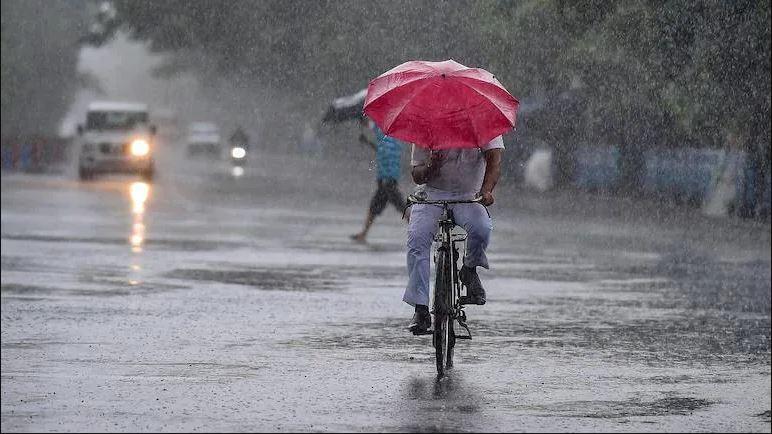In Tanzania, the downpouring has been intensifying nationwide, affecting the functioning of systems and daily life differently. While Dar es Salaam has experienced deadly flooding due to these erratic rainfalls, it has also set on with a different outlook in other regions.
Amongst the regions are Arusha and Kilimanjaro, where the rainfall has continued, but this time with some captivating differences. There has been astonishing and rare hail, which, among other things, has impacted the regions. Before deepening the causes, it is worth sharing some light on the hail rainfall and the formation process.
Hailstorms result from average rainfall intersected by an updraft thunderstorm, which carries the water droplets up to the cold region of the atmosphere, where they freeze. The solids can be more prominent in various sizes depending on the freezing time before the gravity force sweeps it down. The most considerable recorded hailstone was in the United States (Dakota) in 2010; it was about 8 inches and more than half kilograms by weight (0.88 kg), which is said to have set a world record.
Although it may not be a strange circumstance among many people and places in Tanzania, it has become rare compared to the past decades. It, therefore, stands to be an exceptional situation and accompanied by a mixed frame of mind. Some have associated it with the impact of climate change. At the same time, some are just mesmerized, unsure of what can be the cause, especially in Tanzania, where it is not so frequent as in other parts of the world like America, Europe, and China.
Therefore, it is confirmed that water vapour increases as the weather continues to warm. When the moisture is warmed further under thunderstorm conditions and strong updraught, we should expect more hail formation, which is even more significant. It turns out that separating the hail from climate change is impractical, especially when the hail stones are becoming abnormal in size, shape, and colour.
Back then, during the typical acid rainfall, the bluish rainwater was also used to indicate climate change; now, we also have hail stones, which are sometimes coloured. These hailstones, which can now be apocalyptic, are becoming common across various regions, justifying climate change.
READ RELATED: Climate Change: Tanzania’s Rigorous Path to a Sustainable Future.
Hailstorms in the northern regions of Arusha and Kilimanjaro in Tanzania have recently caused some effects. The effects may be minor compared to what has happened in Dar es Salaam simultaneously. However, they should not be underestimated as the alarm volume does not matter, but the cause of the notice should matter the most.
In this case, we have experienced the destruction of crops in the fields and gardens, whereby hailstones hit the leaves of plants and caused massive destruction. One farmer from the UsaRiver, Arusha, described it as a significant loss of food and eventually hunger as so many crops will not flourish. “This year is just bad luck since even the little we tried to plant is being destroyed. We are about to venture into the great risk of famine.”
Elsewhere, the hailstone caused impacts on the buildings by demolishing glass windows and roofs (especially glass roofs) and destroying cars’ windscreens. The magnitude of the effects of hailstones depends on the size, and it becomes quite severe as the altitude increases. In some parts, like Catalonia, Spain, in 2022 and the USA in Colorado in 2023, it caused severe injury to people. Some were hospitalized due to injuries sustained from hail stones. Therefore, the hail rainfall may have adverse impacts, and since its onset is so abrupt, we can be caught up unprepared.
The preparedness to respond to such occurrences is essential and a must action, although hailstorms do not happen often. There is no time to blame; instead, focus on strategies to ease the situation. Therefore, plans should be proactive because it is a rare disaster and unpredictable. Securing the roofs of the houses is one obvious preparedness measure we should always embrace.
The roof protects against different impacts from rainfall, dust, sun rays and other storms like winds. In case of any solid or weak battery, be it hail, rain, or winds, stable and secured roofs are just a good defence.
The outdoor facilities must be secured with protective covers or moved to a roofed space where possible. In the case of small gardens around the homesteads, using greenhouses or nets to protect the plants is an alternative to eliminating the impact of hailstorms. Securing large farms remains challenging, but at least we can provide some tree plants on the fields that can partially withstand the hail rainfall.
In driving under hailstorms, the chance of windscreen damage is vast; therefore, stopping driving is fair and safe. It is also likely to obscure the vision and clarity of the way, which may result in an accident. While it may also contribute to overflow on the roads, it can also result in potholes and rills along the roads, particularly untarmacked roads.
Under such hailstorms, therefore, it is highly recommended to wait until the downpour stops. Otherwise, it is likely to encounter roadblocks. In some cases, it can also be dangerous to aircraft, even to a small extent; therefore, in the event of hail rainfall, the plane, in most cases, cancels its scheduled routes upon realizing the presence of hail rainfall.
It is a rare but sensitive event that impacts human lives, animals, and plants and has potential economic effects. It is much detected insight and may not be easy to contain, eventually it requires preparedness and proactive responses. A practical and responsive disaster mechanism will pave the way for reducing the aftermath of hail rainfall.
It is, therefore, a fascinating occurrence when looked at first sight, but it is likely to be a pinch, on the other hand. The economic impacts are far beyond, and therefore, while considering climate-related disasters, we should also consider these rare and unaccounted but acute and spontaneous disasters.
Hailstorms are unaccounted for misery, a clear indication of changing weather, which eventually acts as a climate change indicator. Although the hailstones are not easy to forecast and are rare occurrences, their onset can be used as an alert to the impact of climate change.




